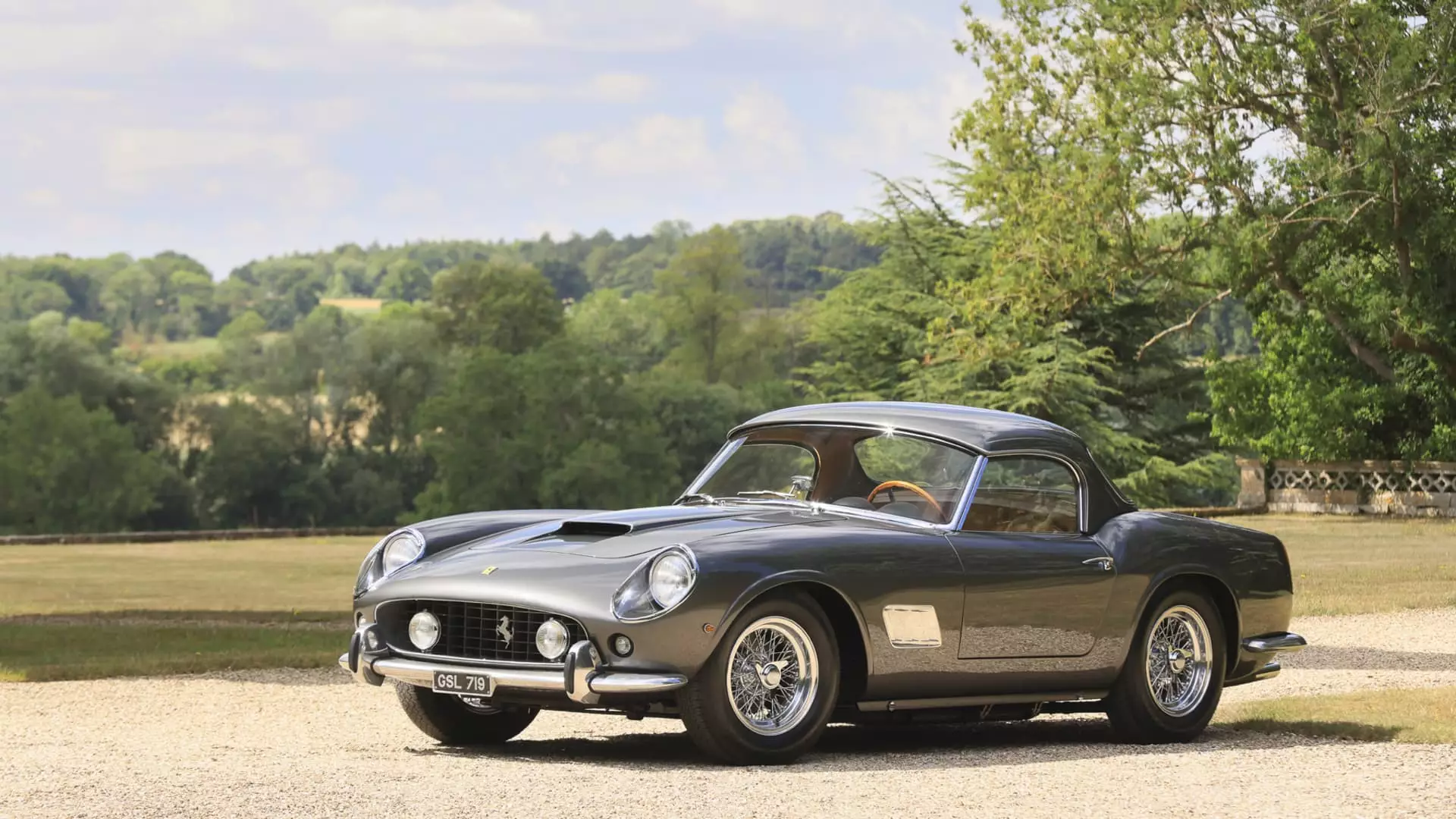The recent downturn in the classic car market, exemplified by the subdued results at Monterey Car Week, signals more than just a temporary lull—it reflects underlying economic and societal realignments. Once regarded as a resilient store of wealth and status, these vintage automobiles now appear vulnerable amid the turbulence of global uncertainty and shifting cultural values. The declining sales figures, slipping average prices, and lower auction peaks are symptomatic of a market in distress, but more profoundly, they serve as a stark reminder of how outdated notions of prestige are being challenged by new priorities and economic realities.
The decline can be contextualized within a broader economic landscape characterized by geopolitical instability—wars in Ukraine and the Middle East, Sino-American tensions, and a cautious global economy. These factors bolster risk aversion, making illiquid assets like classic cars less appealing compared to liquid investments or even plain cash, which offers no shadow of risk and provides immediate security in uncertain times. Moreover, rising interest rates mean the cost of financing these luxury collectibles becomes increasingly prohibitive, further diminishing their allure. Yet, these economic indicators, while impactful, mask a deeper cultural shift that is quietly reshaping the collector landscape.
The Generational Gap: A Fundamental Shift in Passion and Wealth Transfer
At the heart of the classic car market’s troubles is the realization that the dominant demographic—baby boomers—are aging out of their role as primary patrons of vintage automobiles. This age group’s passion for pristine 1950s and 1960s cars—once the backbone of the collector scene—diminishes as they downsize, pass on, or lose interest in maintaining these aging assets. As the reins of wealth and passion shift to Millennials and Gen Z, the landscape is dramatically changing. These newer generations are less captivated by historically significant vintage models and more inclined towards cars that align with contemporary lifestyles.
The transfer of a colossal wealth reserve—estimated at over $100 trillion—sets the stage for an inevitable transformation, but it is not the nostalgic familiarity that drives this new influx, rather an appetite for modernity, practicality, and social relevance. Younger collectors are more interested in affordable, well-maintained post-1980s vehicles, which they can actively enjoy without the burdens of exorbitant repair costs or the aura of exclusivity for its own sake. This shift explains the mounting oversupply of classic 1950s and 1960s models and the corresponding decline in their market value.
Market Fragmentation: From Prestige to Practicality
The auction results underscore a pronounced market fragmentation, where the high-end vintage segment weakens while the market for more recent, attainable cars surges. The scarcity-driven pricing of iconic early Ferraris and classic American muscle cars is evaporating, replaced by a preference for used but reliable luxury vehicles that serve as daily drivers or status symbols in social media-driven lifestyles. Dealers note a surge in private sales, often conducted behind closed doors, indicating a reluctance on the part of sellers to broadcast steep declines in valuation. The embarrassment of holding onto a car that no longer commands prestige mirrors the broader malaise affecting traditional luxury markets.
On the other side, younger collectors are fueling demand for rare but more accessible models—such as limited edition Porsches, modern supercars, and highly specific boutique brands like Pagani and Bugatti. These cars, instead of representing an inheritance from previous generations, symbolize aspirational but attainable luxury—tangible yet less entangled in the fading aura of vintage rarity. The rise of record-setting prices for late-model supercars further exemplifies this preference for modern symbols of status, often driven by a speculative mindset that risks overshooting the intrinsic value of these vehicles.
The Illusion of Investment and the Role of Collecting
This shifting terrain raises uncomfortable questions about the market’s sustainability. The narrative that classic cars are a safe haven for wealth preservation is fast losing its credibility. While prices of vintage automobiles have historically fluctuated, the current slowdown reveals an overreliance on superficial valuations rooted in speculation rather than genuine passion. Many in the industry acknowledge that some of the most coveted models—those from the early to mid-20th century—have become overinflated assets, vulnerable to the inevitable correction.
Furthermore, the rise of private transactions underscores a reluctance among affluent sellers to accept market realities publicly. This tendency enhances a culture of opacity, making it difficult to gauge true market health and creating a false sense of resilience. Meanwhile, the increased popularity of late-model supercars among younger buyers indicates a fundamental reshuffling of fandom and investment focus—away from historical significance toward immediate gratification and daily usability. The allure of rarity is giving way to a pragmatic pursuit of practicality and contemporary status.
Is the Classic Car Market Obsolete or Simply Evolving?
In light of these trends, one must question whether the classic car market is heading toward obsolescence or simply evolving into a different form. Many argue that the traditional paradigm—dominated by aging collectors and limited to vintage models—is giving way to a diverse, dynamic landscape that reflects the values of a digital, socially conscious generation. This new segment emphasizes ownership for enjoyment rather than as a financial hedge, and that shift could ultimately democratize what was once an elitist playground.
Yet, this transition carries inherent risks. The over valuation of modern supercars and the speculative nature of high-end collectibles may lead to a market bubble, ripe for correction. If the primary driver becomes financial gain rather than genuine passion, the cultural and historical significance of classic cars risks dilution. For collectors and enthusiasts, this calls for a recalibration—seeking authentic engagement and sustainable appreciation over fleeting trends or ungrounded investment schemes.
The declining prominence of vintage cars at auction not only challenges the status quo but also prompts the entire community to reassess the very meaning of value in collecting—whether it is rooted in nostalgia, artistry, historical importance, or merely short-term profit. The future of the market hinges on whether it can adapt to these realities or crumble under the weight of its own speculative excesses.

